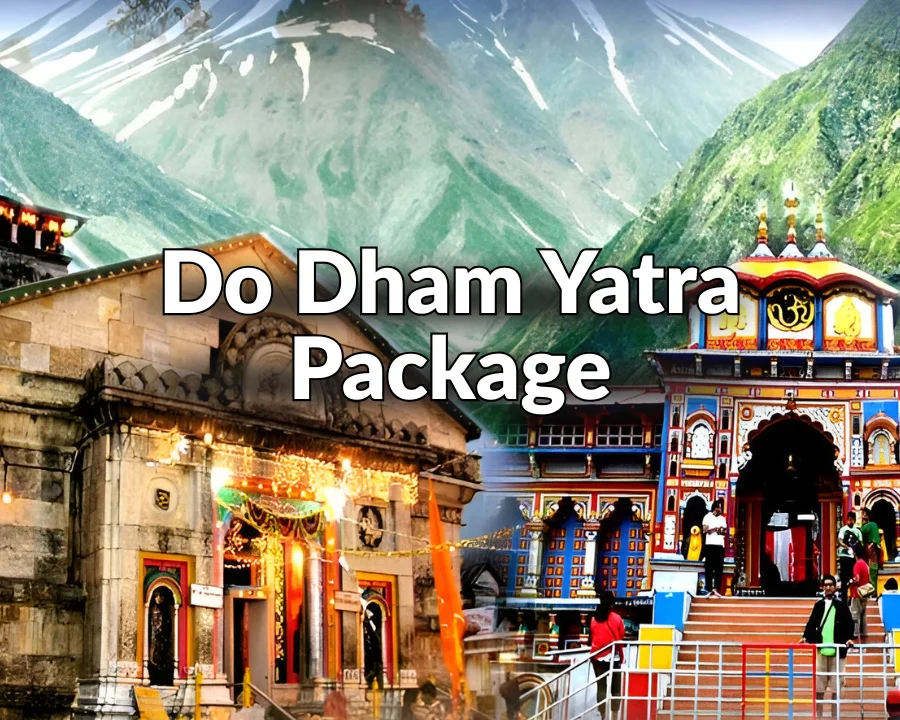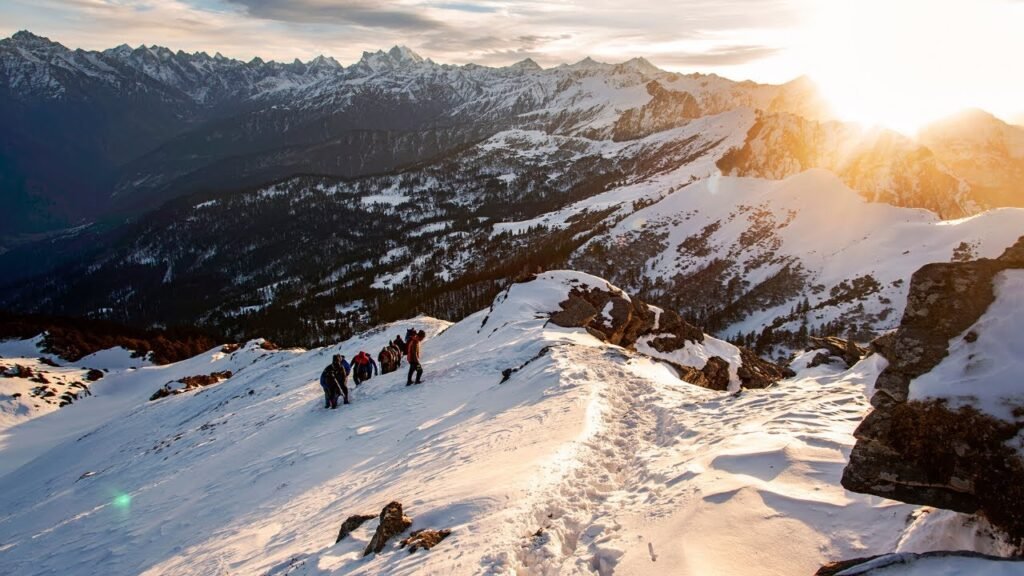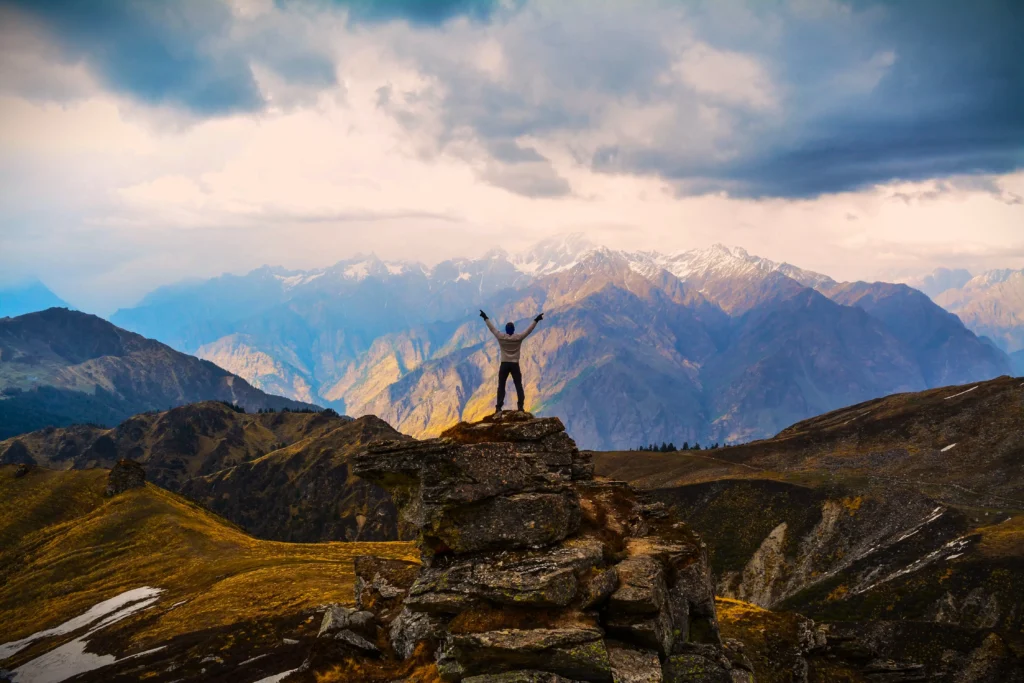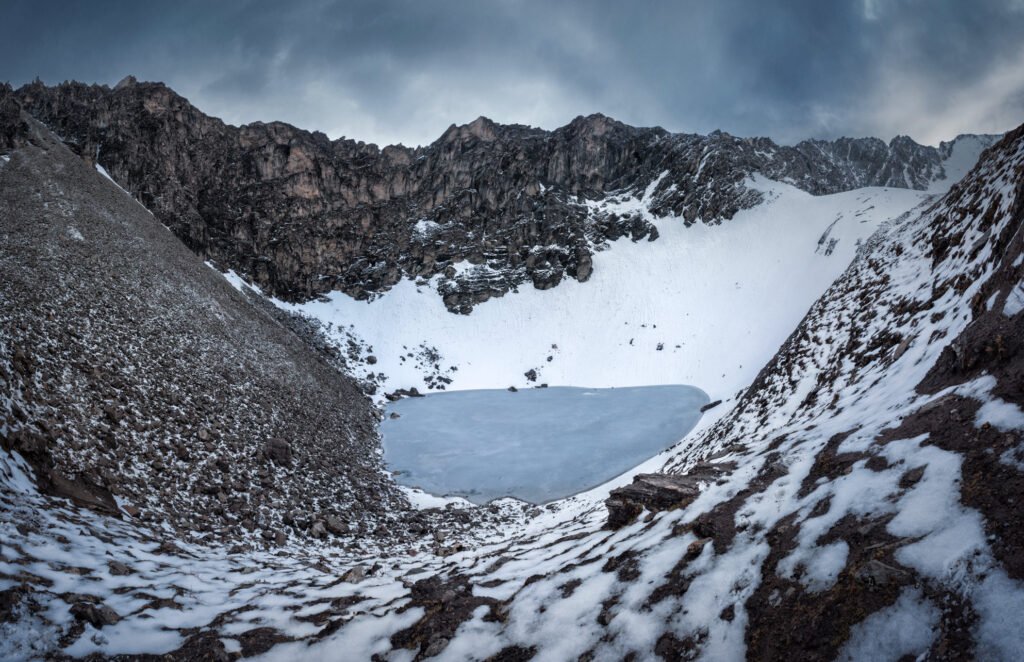
People have always been drawn to the Himalayas, whether they are adventurers or dreamers. There is both beautiful nature and a spiritual vibe. Roopkund is more than just a hike; it’s a chance to enter a new world every step brings you closer to nature and to yourself.
The Roopkund trek is a rare chance to get away from the noise of the world and connect with something much deeper—the wild Himalayas. Get ready to be changed and inspired.
The spiritual meaning of Roopkund: tales and beliefs from the area
Most people know the story of Goddess Nanda Devi, who is the goddess of the Uttarakhand Himalayas. King Jasdhaval of Kannauj was going on a pilgrimage to pay his respects to the goddess. He was with his pregnant wife, their servants, and a group of dancers. The goddess was upset when the king’s followers threw a party on the holy land. She sent down a horrible hailstorm with hailstones that were as hard as iron. It killed everyone at the party right away.
The trail goes from Lohajung to Wan, which is the last village where people live along the way. The stone paths that wind around Wan and the beautifully carved wooden doors and windows are typical of Garhwali villages.
Wildflowers, Brahma Kamal, and animals that live in the Himalayas
The hike starts in a thick forest of rhododendron, pine, and oak trees. In the spring and early summer, the rhododendron trees bloom with a lot of red, pink, and white flowers that make a beautiful canopy of color. These woods turn into Ali Bugyal and Bedni Bugyal, two of the most beautiful alpine meadows in the Himalayas, as you climb higher. These big, rolling grasslands look like a green carpet because they are covered in wildflowers. The soft grass of Bedni Bugyal feels great on your bare feet, and the beautiful peaks of Trishul and Nanda Ghunti are always there to see you.
The Roopkund trek goes up slowly, giving you time to get used to the changing scenery. There are always new things to see, hear, and feel.
Day 1:
From Lohajung to the village of Didna
The hike begins with a drop to the Neel Ganga River, followed by a steady climb through oak and rhododendron forests to the charming village of Didna.
Day 2:
From Didna to Ali Bugyal or Bedni Bugyal
The view changes a lot today. It’s hard to climb, but when you get to the top, you can see the beautiful Ali Bugyal. From here, you can see the Himalayan peaks in every direction, and this is where the panoramic Roopkund trek starts.
Day 3:
From Patar Nachauni to Bedni Bugyal
The path goes up from the soft grasslands to Patar Nachauni. The name comes from the story of King Jasdhaval’s group and means “place where stones dance.”
Day 4:
From Bhagwabasa to Patar Nachauni
Today is a good day to find out more about the area. It’s not easy to get to the Kalu Vinayak temple. There is a black Ganesha statue in front of it with prayer flags around it.
Day 5:
Go from Bhagwabasa to Roopkund Lake and then back to Bedni Bugyal.
Before dawn, the day of the summit begins. The way to Roopkund is rocky and steep, and there is snow on it. It takes three hours to walk there. The last climb is hard on the body, but it makes you feel very emotional.
Day 6:
Go from Bedni Bugyal to Wan and then to Lohajung by car.
The last day of the trek is a long walk through the woods on a path that seems both new and old. You go back into the woods, where there are thick trees and the sounds of the forest, and you keep going until you get to Wan village.
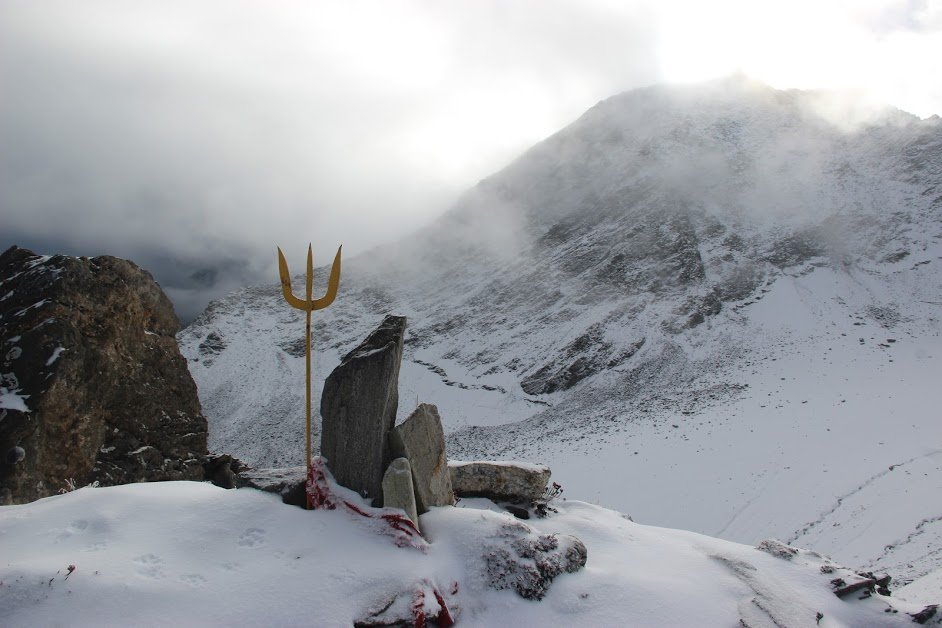
Alpine Meadows, Snow Peaks, and Rivers are great places to see and take pictures.
Photographers and people who love big landscapes will always love the Roopkund trek. The views along the Roopkund trek are great because they are so big and different. There is a beautiful view at every turn on the trail.
Ali and Bedni Bugyal’s two meadows are the best places to take pictures on the trek. When the sun rises and sets, the golden light hits the meadows and peaks around these big, rolling grasslands, making them great for wide-angle landscape shots. Every photographer wants to take a picture of Mount Trishul’s reflection in the still waters of Bedni Kund.
As you go higher, the focus shifts to the beautiful peaks covered in snow. Most of the trek, Mount Trishul (7,120m) and Nanda Ghunti (6,309m) stand out against the sky.
The Roopkund trek is different in each season, so it’s important to choose the right one.
Most people agree that the best time to go on the trek is after the monsoon, which lasts from September to October. The meadows are green and full of life after the monsoon rains. The peaks are easy to see because the sky is usually clear. The weather is nice and steady, but it gets cold at night. You can take great pictures and see how beautiful the Himalayas are at this time of year.
This time of year, before the monsoon (May to June), is beautiful in its own way. The meadows may be a little browner than they were in the fall, but this is the best time to see snow on the higher parts, especially around Roopkund Lake. The rhododendrons in the lower forests are also in full bloom right now, which makes the first few days of the trek more colorful.

If you love nature, here are some tips for hiking: Take your time, pay attention, and think about what you’re doing.
Take your time; don’t rush from one campsite to the next. The small things are what make this hike so beautiful. As you walk, take your time, breathe deeply, and let your senses take in everything around you.
Being aware of everything that is going on is what being mindful means. Hear the sounds of nature all around you, feel the ground beneath your feet, and notice how the light changes. Being aware can turn a simple walk into a moving meditation.
Take some time to meditate. You can do it in the quiet area around Bedni Bugyal or by a stream where there aren’t many people. You can relax and feel more connected to the peaceful energy of the Himalayas if you sit still for a few minutes and focus on your breath. Kalu Vinayak and Roopkund

A lot of people who want to connect with nature and their spirituality ask these questions.
Q: Why Roopkund Lake has bones?
A: The skeletons are what make the lake mysterious. Most people say that the goddess Nanda Devi punished the king’s followers for doing something wrong. Around 850 AD, scientists think that two different groups of people made them. They are a strong reminder for hikers of how short life is and how strong nature is.
Q: Can a beginner go for this trek?
A: The Roopkund trek is rated as medium to hard. If you’re in good shape and really want to do it, you can do it even if you’ve never done it before. To have a good trek, you need to get used to the area and move at a slow, steady pace.
Q: What kinds of animals will I see?
A: There aren’t many big mammals here, but the Himalayas are home to a lot of plants and animals. You can see a lot of different kinds of birds, like griffon vultures and monal pheasants. It’s easier to get to the plants, and at higher elevations, you can see beautiful rhododendron forests, huge meadows of wildflowers, and the rare Brahma Kamal.
Q: How can I get the most out of the cultural part of the trek?
A: To have a meaningful cultural trek in Uttarakhand, learn about the people who live in Wan and Lohajung. If you can, stay with locals, talk to your guides and porters about their lives, visit the temples, and do what they say.
Other Details
Contact us to join in our trekking journey.
If you loved reading about this trek, you might also like Kuari Pass Trek.


